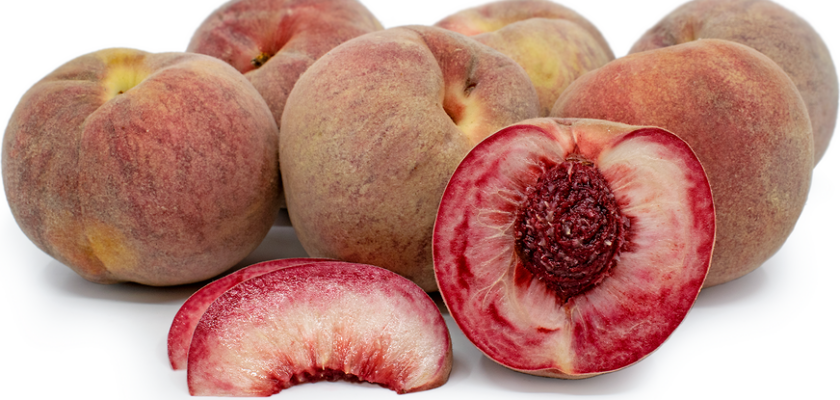Indian peaches, also known as Blood peaches, are a unique and distinctive variety of peaches known for their deep red or purplish flesh. If you’re interested in trying these flavorful peaches, whether for their appearance or taste, this buyer’s guide will assist you in selecting the best Indian peaches.
- Flesh Color: The most defining characteristic of Indian peaches is their vibrant red or purplish flesh. Look for peaches that exhibit a rich and intense color throughout the flesh. The color should be uniform and extend to the pit area.
- Texture: Gently press the peach with your fingers. A ripe Indian peach should give slightly to pressure and feel soft without being overly mushy. Avoid peaches that are too hard or too soft, as they might not be at their prime ripeness.
- Aroma: Hold the peach close to your nose and take a gentle sniff near the stem area. A ripe Indian peach should have a sweet and fruity aroma. The scent should be pleasant and noticeable, indicating that the peach is ready to be enjoyed.
- Skin Color: Indian peaches typically have a mottled skin with shades of red, purple, and sometimes yellow or orange. While the skin might show variations, avoid peaches with large areas of green or unripe-looking skin.
- Size: Indian peaches vary in size, but they are generally similar in size to traditional peaches. Choose peaches that are plump and feel substantial in your hand. The size you select will depend on your preferences and intended use.
- Stem and Bruises: Examine the stem area of the peach. If the stem is still attached to a part of the branch, it suggests that the peach was harvested at the right time. Avoid peaches with dried or shriveled stems. Additionally, steer clear of peaches with visible bruises, cuts, or soft spots, as they can indicate damage or spoilage.
- Seasonality: Indian peaches are typically available during the summer months, which span from late spring to early fall. Their availability might vary depending on your location and the local growing season.
- Ripening: If you have Indian peaches that are slightly underripe, allow them to ripen at room temperature. Placing them in a paper bag can accelerate the ripening process. Adding a ripe banana or apple to the bag can help release ethylene gas, which promotes ripening.
- Storage: Once ripe, store Indian peaches in the refrigerator to maintain their freshness. They should last for a few days. If you have unripe peaches, store them at room temperature until they’re ready to eat.
- Culinary Uses: Indian peaches offer a unique appearance and flavor that can be enjoyed in various ways:
-Fresh: Slice the peach open and remove the pit. Savor the richly colored flesh on its own or as part of a fruit salad.
-Baking: The vibrant color of Indian peaches makes them ideal for adding visual appeal to pies, tarts, and other baked goods.
-Preserving: The distinct color of Indian peaches can also enhance jams, jellies, and fruit preserves. - Nutritional Benefits: Indian peaches provide both flavor and nutrition. They are a good source of vitamins A and C, dietary fiber, and antioxidants.
In conclusion, selecting ripe and visually striking Indian peaches involves considering factors such as flesh color, texture, aroma, skin color, and overall quality. Enjoy the unique taste and appearance of these peaches while they’re at their peak of sweetness and freshness, whether you’re enjoying them on their own or incorporating them into your culinary creations.
